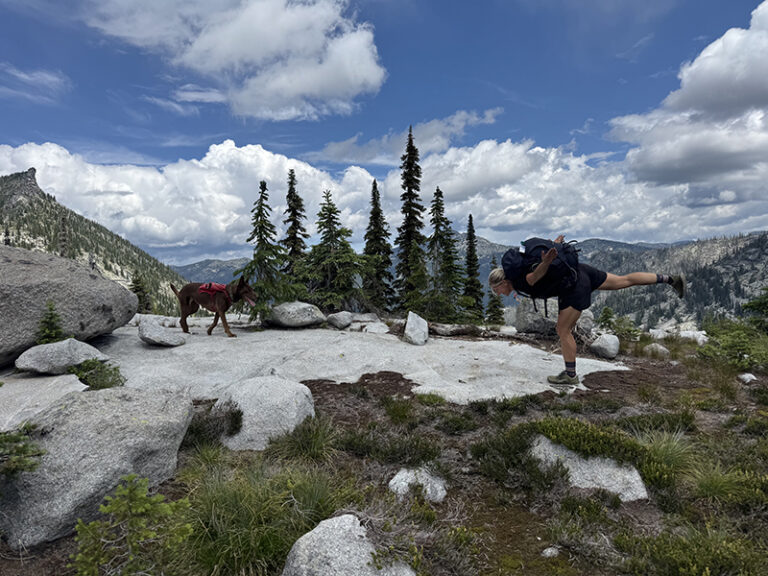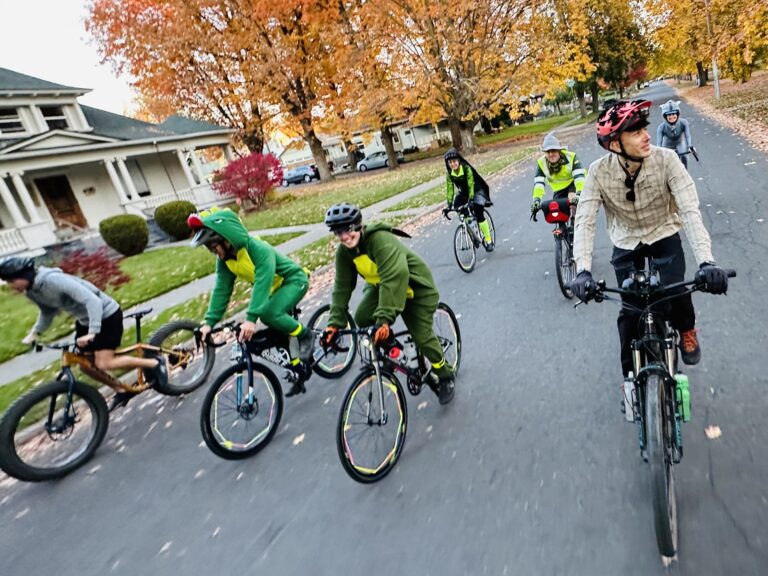What I love the most about rockhounding is the adventure of discovery. Often, I stumble across something that catches my attention while reading a book, perusing a website, or talking to people—and this something usually leaves me with more questions.
For example, I was looking at an online map of rockhounding locations in Idaho (www.idahoutdoors.com) one evening and noticed a couple markers north of the Emerald Creek garnet site. I clicked on one of the markers and it read, “Staurolite crosses, extremely rare.” My interest was piqued. I learned that the metamorphic rocks in the area around Fernwood, Idaho, were formed from clays that had been pushed deeply into the earth. They were heated to just the right temperature and subjected to the right amount of pressure for the minerals within the clay to separate out and reform. Staurolite forms by the same geologic processes that produces garnets but begins forming at a slightly higher temperature.
After the researching comes my favorite part: loading up the truck and heading for the mountains. The directions turned out to be misleading. I had to search to find the staurolite. At first, I didn’t find anything and felt frustrated, so I let my dog out to run around in a field and took my gold pan down to the creek. I ended up with a pan full of garnet sand and some staurolite. After looking around a bit more, I found a rock outcropping on the side of the road full of staurolite. With trial and error, I have found that the best way to get a fully formed staurolite cross is to pan the gravels along the edge of the creek. Staurolite, much like garnet, is heavier than the surrounding gravels, so it pans out well.
Here’s what I learned from panning for staurolite. Before tossing out any larger rocks, flip them over. Often you will find a cross still embedded in the parent rock. It takes persistence to find a fully formed cross. Expect them to be about an inch and one-half or smaller. I have found a couple of incomplete crosses larger than two inches. Most of the crosses occur at 60 degrees. A 90 degree cross is very rare, indeed. I have not found one yet, but I know they’re out there.
Rockhounding Equipment
- Homebuilt ¼-inch box screen
- Shovels
- Buckets
- Gold pan
- Bear spray (I have seen both bear and cougar prints along the creek)
Getting There and Other Logistics
From St. Maries, Idaho, head south on state highway (ID-3). In roughly 20 miles you will reach the town of Fernwood. In Fernwood, turn right onto Carpenter Creek road and cross the St. Maries River. Continue along Carpenter Creek road about 2 miles. Pass Little Carpenter Creek road, then turn right at the old wooden cattle chute. This is Big Carpenter Creek Road. On my last visit the road signs were missing. After about 4 potholed miles up the valley, you will come to a left-hand switchback, which heads uphill. The rock outcropping on your left is full of Staurolite, and you can pan the creek to your right.
Big Carpenter Creek flows one drainage north of Emerald Creek, out of the same mountains. The north side of these mountains is interspersed with Potlatch Corporation timberlands, along with state and private lands. The road is well used during the winter and stays mostly in the valley until just after the staurolite site. As such, it’s a perfect early spring rockhounding site. Once spring runoff begins, though, it will be difficult to pan the creek gravels until after the water subsides in summer.
I usually park on Potlatch land and then hike along the creek, panning in the creek as I go. Potlach allows recreational panning on their properties. You will need to buy a permit to use Potlatch timberlands, but they are good for the entire year. You can also hike up the creek to where the wide valley closes off and pan the creek there, as this is roughly where state land begins. // (Jason Wilmoth)
Jason Wilmoth has been chasing adventure and solitude in the mountains and rivers of the Inland Northwest for almost 20 years through whitewater kayaking, climbing, hiking and, more recently, rockhounding with his wife and daughters. This is his first article in Out There.
Feature photo: Garnets on a boulder found in the creek. // Jason Wilmoth













